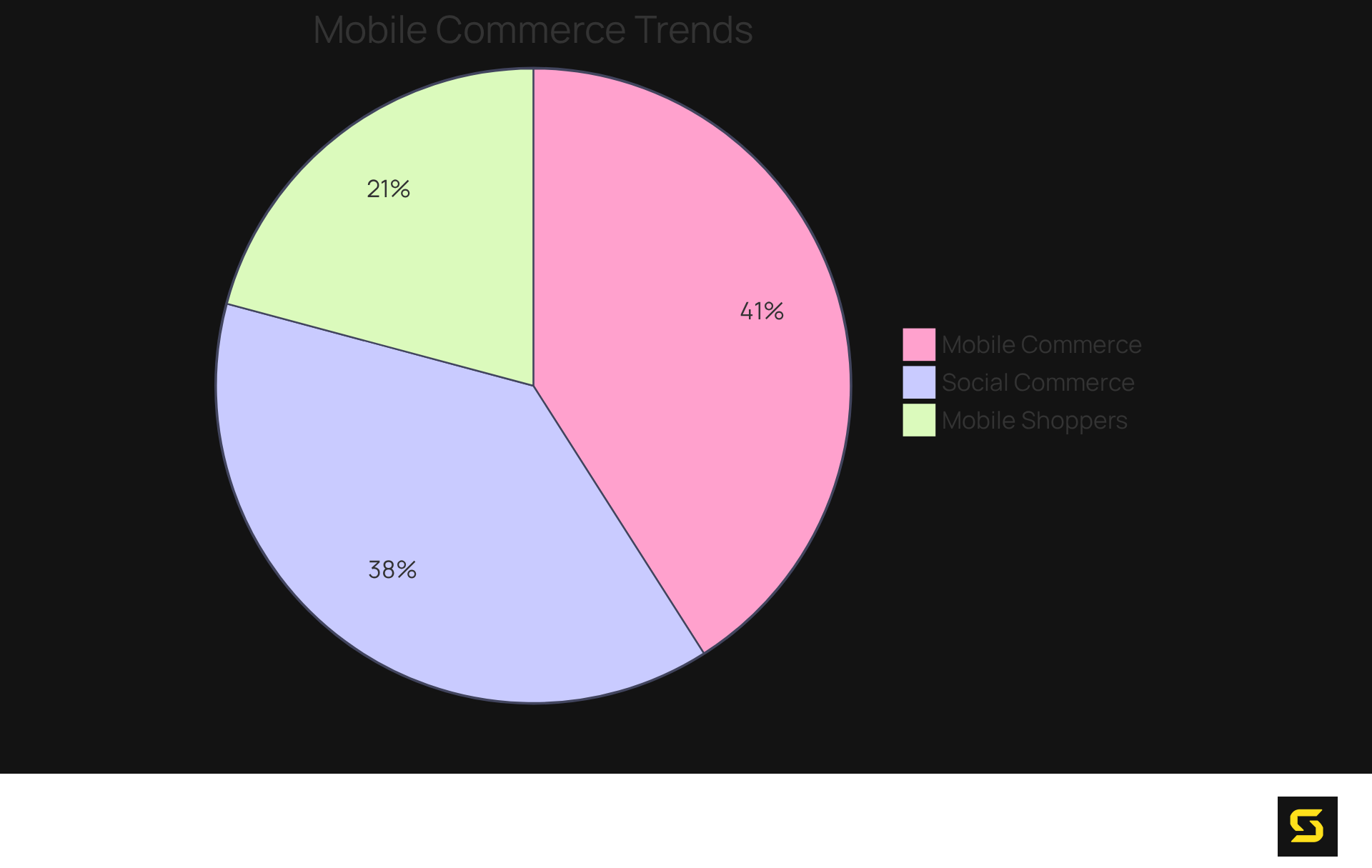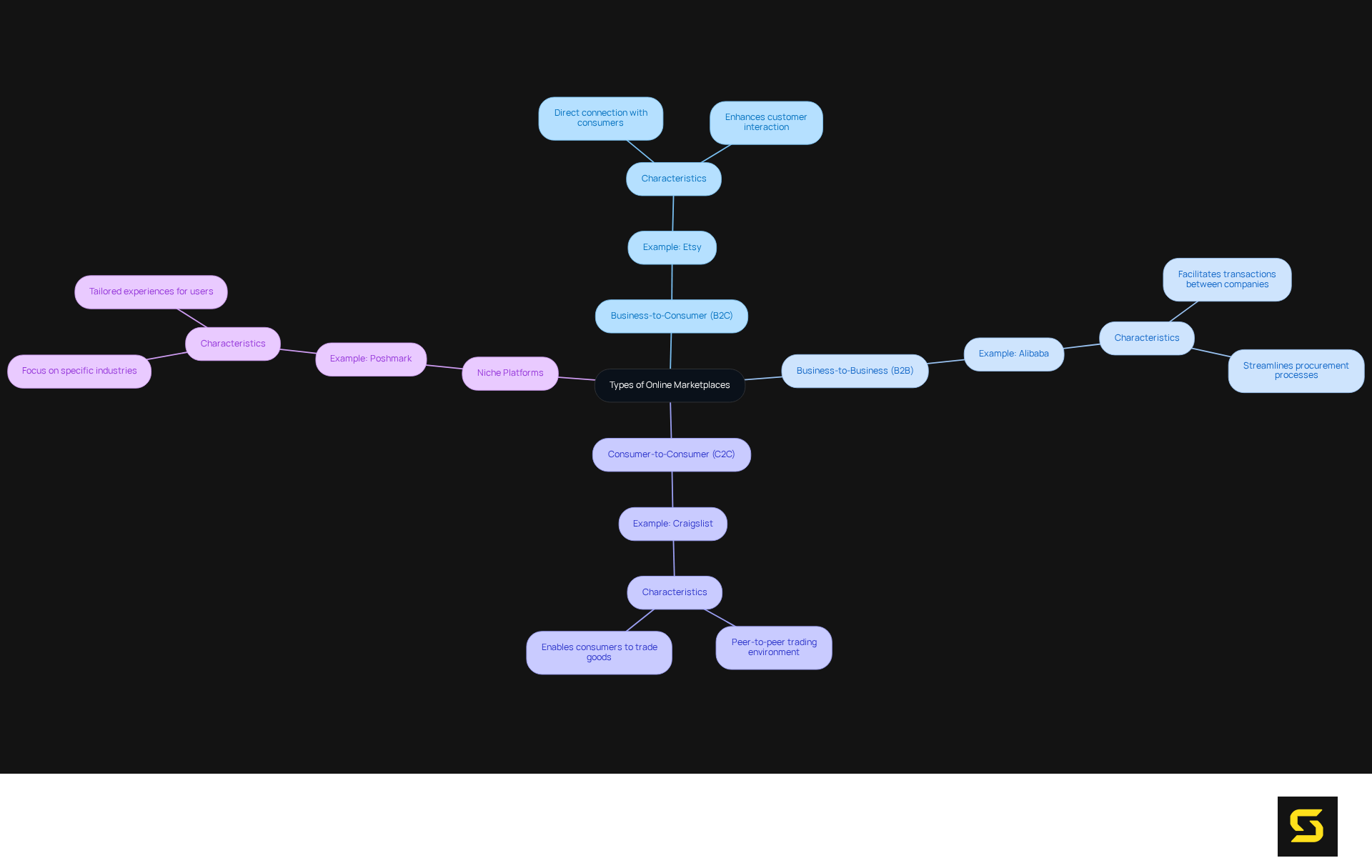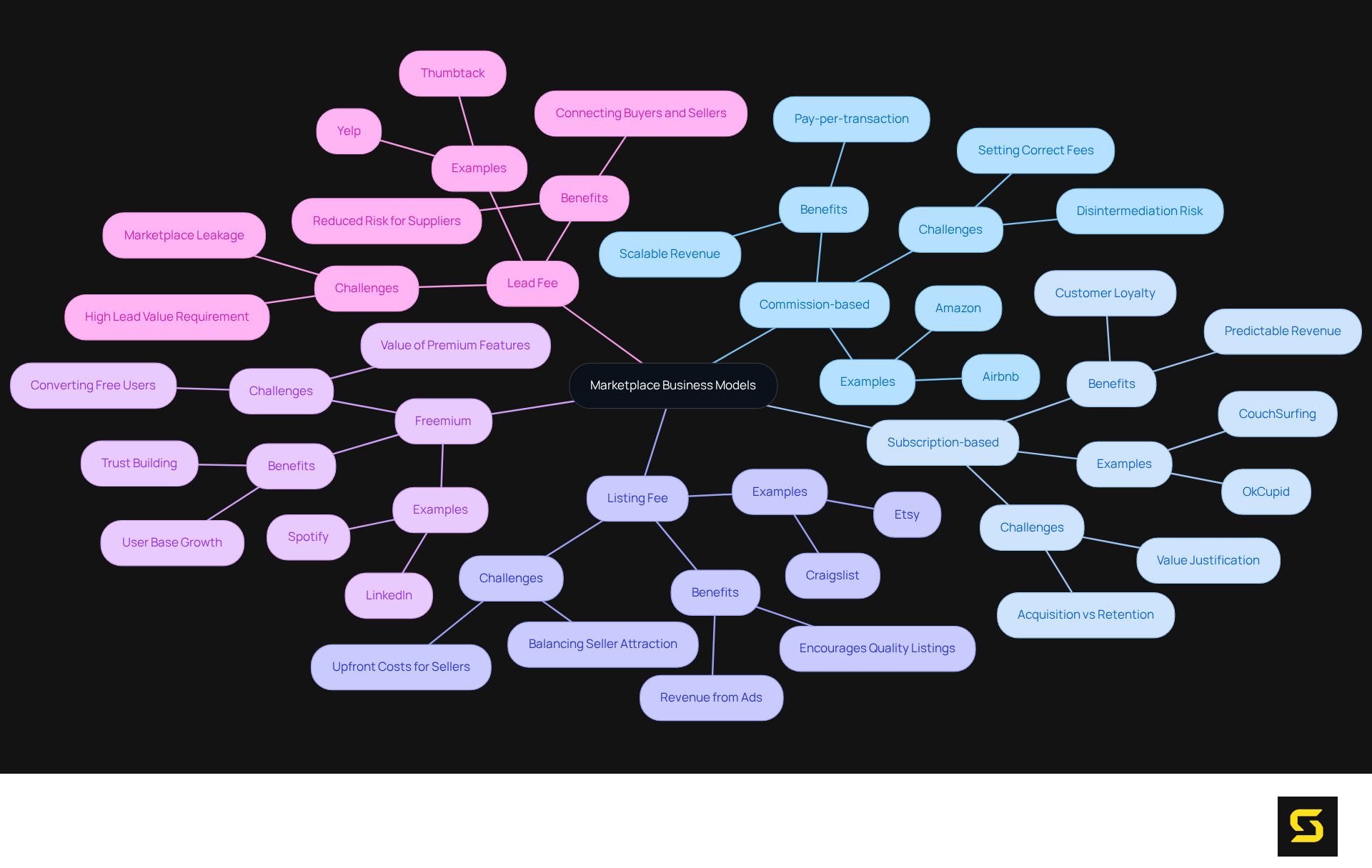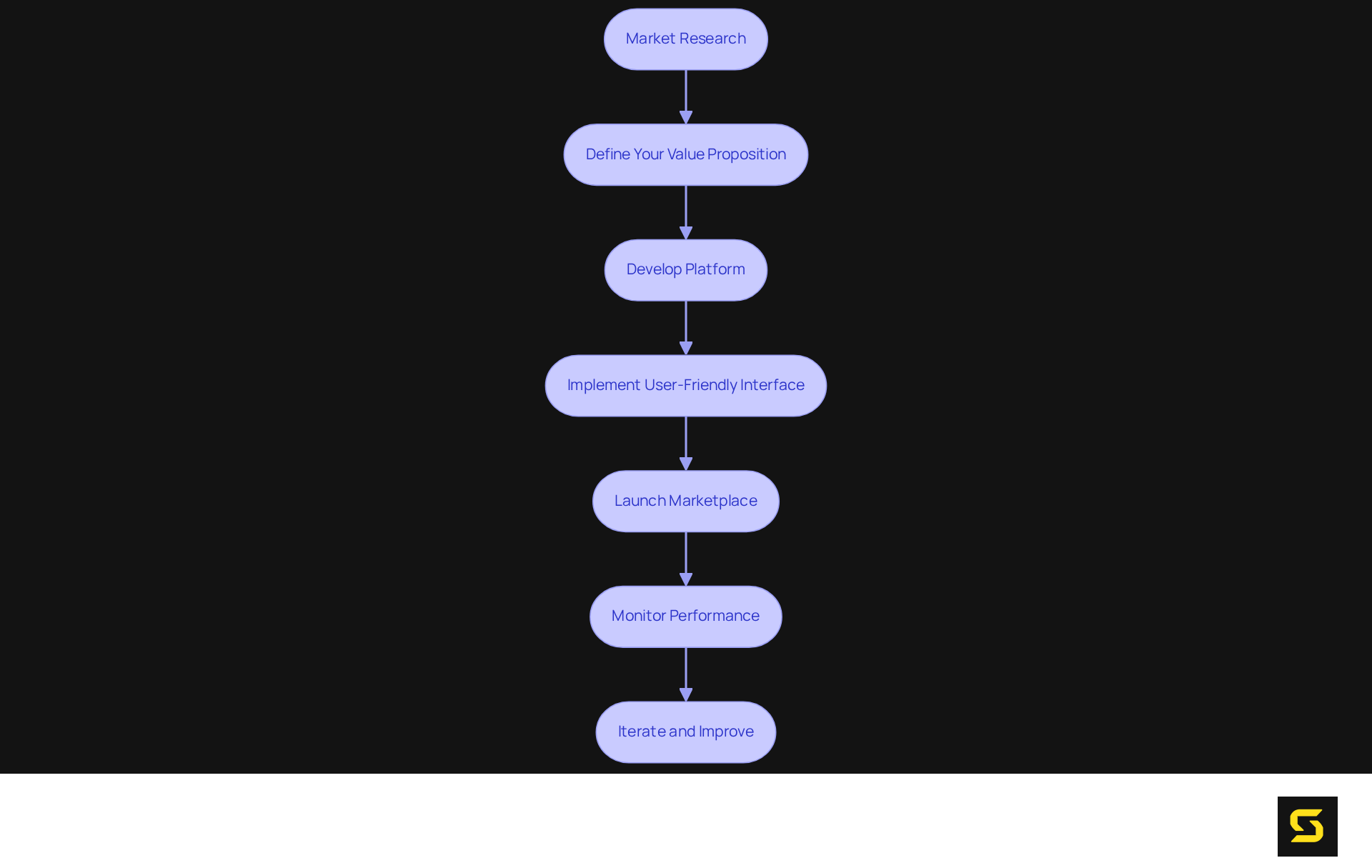Overview
The article underscores the essential steps for establishing a successful online marketplace, asserting the critical need to comprehend market dynamics, consumer behavior, and effective business models. It elaborates on the significant growth of mobile and social commerce, the classification of online platforms, and the imperative for comprehensive market research coupled with a robust value proposition. These elements are vital for attracting and retaining users within an increasingly competitive landscape.
Introduction
The rapid evolution of online shopping is fundamentally reshaping the retail landscape, with mobile commerce projected to dominate eCommerce sales in the coming years. As businesses strive to meet the growing demand for personalized and seamless shopping experiences, understanding the nuances of the online marketplace becomes crucial. Entrepreneurs must recognize that the key steps to successfully developing their platforms in this competitive environment include not only adapting to technological advancements but also anticipating consumer needs.
How can they navigate the challenges that arise in an ever-changing digital marketplace? This question underscores the importance of strategic foresight and agility in their approach.
Define the Online Marketplace Landscape
The online shopping environment is profoundly shaped by mobile commerce, which is projected to make the best online marketplace account for 59% of total retail eCommerce sales, translating to $4.01 trillion by 2025. This transformation mirrors a significant consumer shift towards mobile shopping, with 76% of adults in the United States engaging in purchases via smartphones. As mobile commerce continues its upward trajectory, businesses must evolve to fulfill the demand for personalized experiences and seamless transactions within the best online marketplace. Notably, 30% of the global digital population shops through mobile devices, totaling 1.65 billion mobile shoppers, underscoring the magnitude of this trend.
Social commerce is also on the rise, with 55% of shoppers indicating that they have made purchases through social media apps in 2025. This trend highlights the critical need to integrate into strategies for the best online marketplace to enhance visibility and engagement. For instance, platforms like Amazon and eBay, which are considered the best online marketplace, have established high benchmarks for user experience and operational efficiency, compelling new entrants to adopt similar methodologies to attract and retain customers.
Nonetheless, companies must adeptly navigate the logistics challenges that accompany the rapid expansion of mobile commerce. Conducting competitor analysis and identifying market gaps can unveil unique value propositions that a new marketplace can exploit. Case studies illustrate the swift growth of mobile commerce, particularly in regions like the Philippines, where eCommerce sales soared by 24.1% in 2023, propelled by a young, tech-savvy demographic. Furthermore, the impact of voice commerce, projected to reach $151.39 billion by 2025, is becoming increasingly significant in mobile shopping, further emphasizing the necessity for companies to consider all facets of mobile commerce. Such insights are vital for organizations aspiring to carve out a niche in a competitive landscape, ensuring they remain relevant and responsive to the evolving behaviors of consumers.

Explore Types of Online Marketplaces
Online platforms can be distinctly categorized into several groups:
- Business-to-Consumer (B2C)
- Business-to-Business (B2B)
- Consumer-to-Consumer (C2C)
- Niche platforms
B2C platforms, such as Etsy, empower companies to sell directly to consumers, fostering a direct connection that enhances customer interaction. Conversely, B2B platforms like Alibaba facilitate transactions between companies, streamlining procurement processes and expanding market access. C2C platforms, exemplified by Craigslist, enable consumers to trade goods amongst themselves, creating a robust peer-to-peer trading environment. Niche platforms focus on specific industries or product categories, delivering tailored experiences that cater to specialized user needs. For instance, platforms like Poshmark cater to the fashion resale market, linking sellers with buyers interested in second-hand clothing.
Understanding these platform types is crucial for entrepreneurs, as it helps them select the that aligns most closely with their business objectives and target demographics. As Brianna Conley, Content Marketing Manager, asserts, 'The growth of online platforms has transformed the eCommerce sector, making the best online marketplace a leading influence in how consumers shop online.'
Furthermore, with 47% of consumers beginning their product searches on online stores, recognizing trends and consumer preferences is essential for developing successful platforms. Entrepreneurs must remain vigilant against common pitfalls, such as neglecting to evaluate their target audience's preferences when determining a business approach. By understanding the various categories of platforms and their associated benefits, companies can strategically position themselves for growth in the ever-evolving eCommerce landscape, especially by utilizing the best online marketplace.

Choose an Effective Marketplace Business Model
When creating a digital platform, selecting an efficient business strategy is essential. Common types include:
- Commission-based
- Subscription-based
- Listing fee
- Freemium structures
A commission-based system, where the platform takes a percentage of each sale, is particularly popular for B2C services. This framework has demonstrated effectiveness for prominent platforms such as the best online marketplace, Amazon, and Airbnb, which utilize it to generate significant income while sustaining a dynamic trading environment. In 2021, $3.23 trillion was invested worldwide in the best online marketplaces, underscoring the magnitude and significance of these business structures.
Subscription systems, where individuals pay a recurring fee for access, prove effective for B2B marketplaces. These systems foster customer loyalty and generate predictable revenue streams, as exemplified by platforms like OkCupid, which offers tiered subscription plans that encourage long-term engagement. However, subscription frameworks encounter challenges, including the necessity to consistently deliver value to justify membership costs, complicating customer acquisition.
Listing fee structures impose a charge on sellers to display their products, making them especially beneficial for specialized platforms. This approach ensures revenue from each advertisement, incentivizing sellers to enhance the quality of their listings. Nevertheless, it can deter some sellers due to upfront costs, necessitating a careful balance between attracting sellers and generating revenue.
The freemium approach enables marketplaces to offer both complimentary and premium features, initially drawing in individuals with free access while presenting appealing premium options. This strategy aids in developing a customer base and building trust, yet converting free users to paying clients remains a considerable challenge.
Additionally, the lead fee structure provides value by connecting suppliers with potential buyers, thereby reducing risk for suppliers. Ultimately, the selection of a framework should align with the best online marketplace's and intended audience. As the landscape evolves, grasping the benefits and obstacles of each approach will be crucial for success in 2025 and beyond. For instance, platforms employing a mixed revenue approach can leverage the advantages of both commission and subscription tactics, enhancing profitability while addressing diverse client needs.

Follow Key Steps to Develop Your Marketplace
To create the best online marketplace, it is imperative to follow these essential steps:
- Market Research: Conduct comprehensive research to grasp your target audience, competitors, and prevailing market trends. This vital step is underscored by the fact that 60% of consumers begin their shopping journey on search engines, emphasizing the significance of comprehending consumer behavior. Furthermore, the expense of creating the best online marketplace generally spans from $30,000 to $200,000+, highlighting the considerable financial commitment necessary for platform development.
- Define Your Value Proposition: Clearly articulate what sets your marketplace apart and why individuals should choose it over competitors. A compelling value proposition can significantly enhance client retention and engagement. For instance, the

Conclusion
The development of an effective online marketplace is paramount in today’s rapidly evolving eCommerce landscape. By grasping the dynamics of mobile commerce, social commerce, and the diverse types of platforms available, businesses can strategically position themselves to meet consumer demands and preferences. Insights gathered from market research and competitor analysis form the foundation for crafting unique value propositions that resonate with target audiences.
Key arguments throughout this article underscore the necessity of selecting the right business model—be it commission-based, subscription, or a mixed approach—to ensure sustainability and profitability. Entrepreneurs must remain vigilant regarding the logistics challenges associated with scaling their platforms and the imperative of adapting to emerging trends, such as voice commerce. By adhering to essential steps, including comprehensive market research and defining a clear value proposition, businesses can adeptly navigate the complexities of launching a successful online marketplace.
Ultimately, the significance of constructing a robust online marketplace cannot be overstated. As the digital shopping environment continues to evolve, remaining informed about current trends and consumer behavior will be vital for success. Entrepreneurs are urged to embrace innovation and leverage the best practices outlined in this article to create platforms that not only meet but exceed customer expectations, thereby ensuring long-term growth and relevance in the competitive eCommerce arena.
Frequently Asked Questions
What is the projected impact of mobile commerce on online marketplace sales by 2025?
Mobile commerce is projected to account for 59% of total retail eCommerce sales, translating to $4.01 trillion by 2025.
How prevalent is mobile shopping among adults in the United States?
76% of adults in the United States engage in purchases via smartphones.
How many mobile shoppers are there globally?
There are approximately 1.65 billion mobile shoppers globally, representing 30% of the global digital population.
What is social commerce, and how is it trending?
Social commerce refers to shopping through social media apps, with 55% of shoppers indicating they have made purchases through these platforms in 2025.
Which platforms are considered the best online marketplaces?
Amazon and eBay are highlighted as the best online marketplaces, known for their high benchmarks in user experience and operational efficiency.
What challenges do companies face with the growth of mobile commerce?
Companies must navigate logistics challenges that accompany the rapid expansion of mobile commerce.
How can conducting competitor analysis benefit new online marketplaces?
Conducting competitor analysis and identifying market gaps can help unveil unique value propositions that a new marketplace can exploit.
What recent growth trend has been observed in eCommerce sales in the Philippines?
eCommerce sales in the Philippines soared by 24.1% in 2023, driven by a young, tech-savvy demographic.
What is the projected growth of voice commerce by 2025?
Voice commerce is projected to reach $151.39 billion by 2025, highlighting its increasing significance in mobile shopping.
Why are insights into consumer behavior important for organizations?
Insights into consumer behavior are vital for organizations aspiring to carve out a niche in a competitive landscape, ensuring they remain relevant and responsive to evolving consumer needs.





